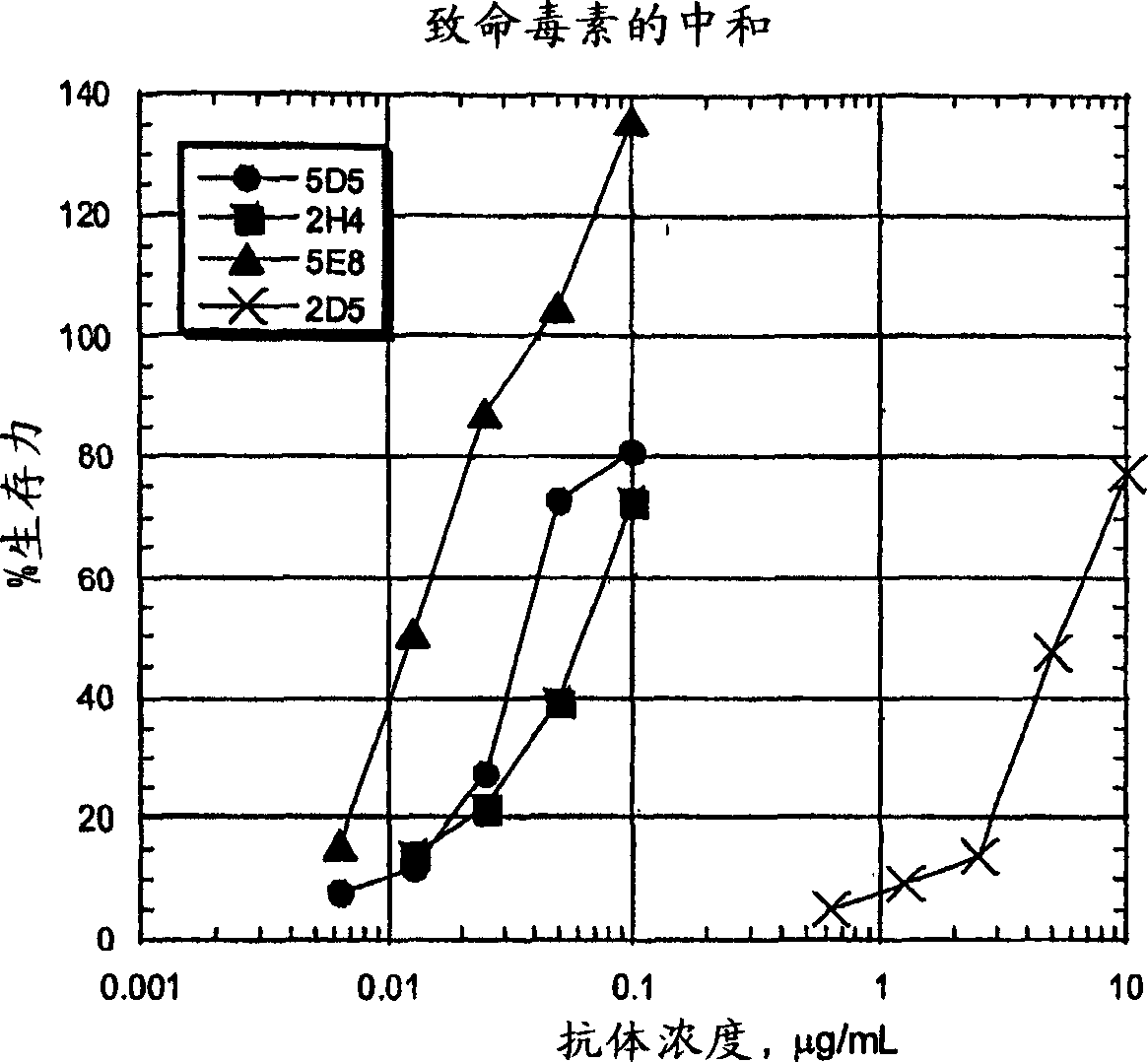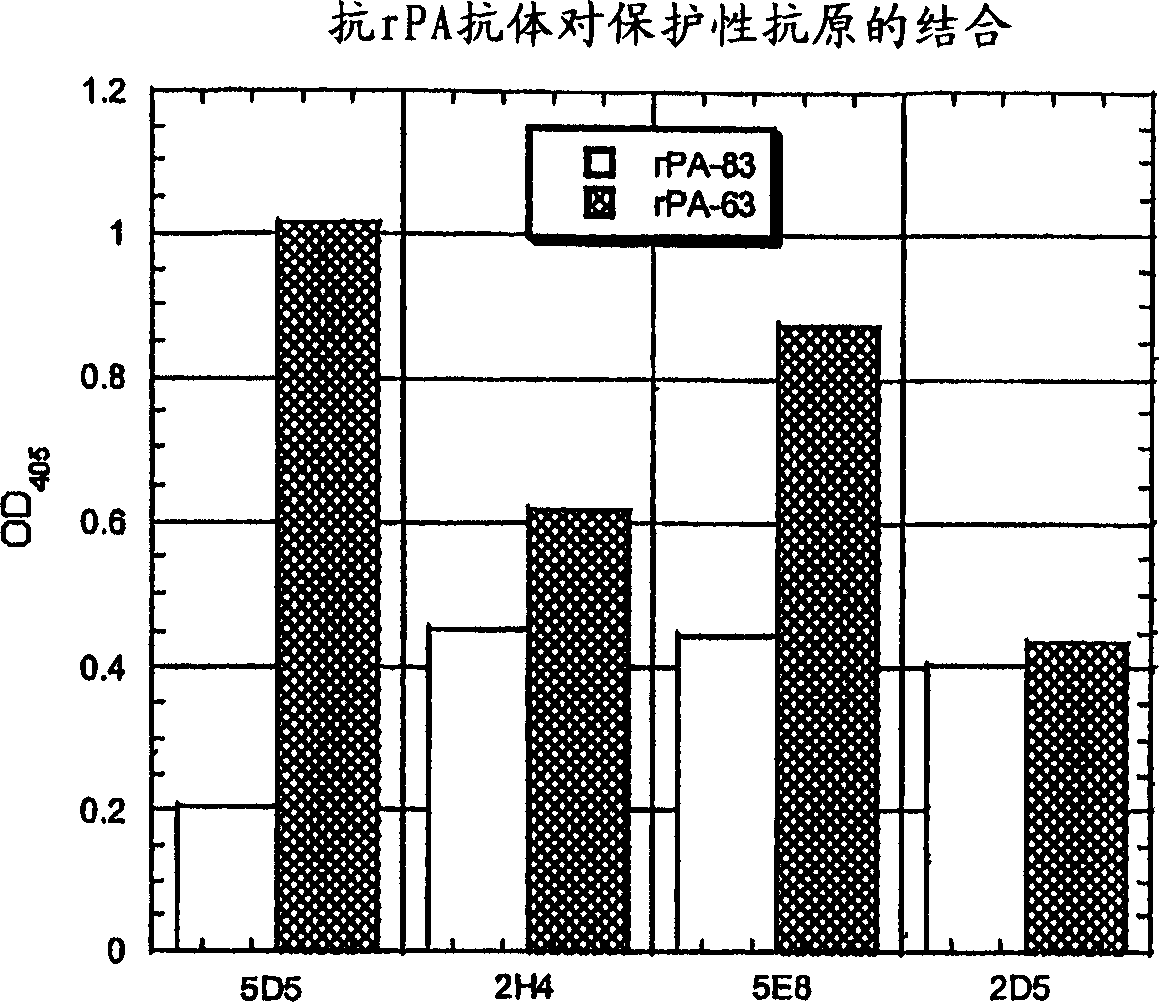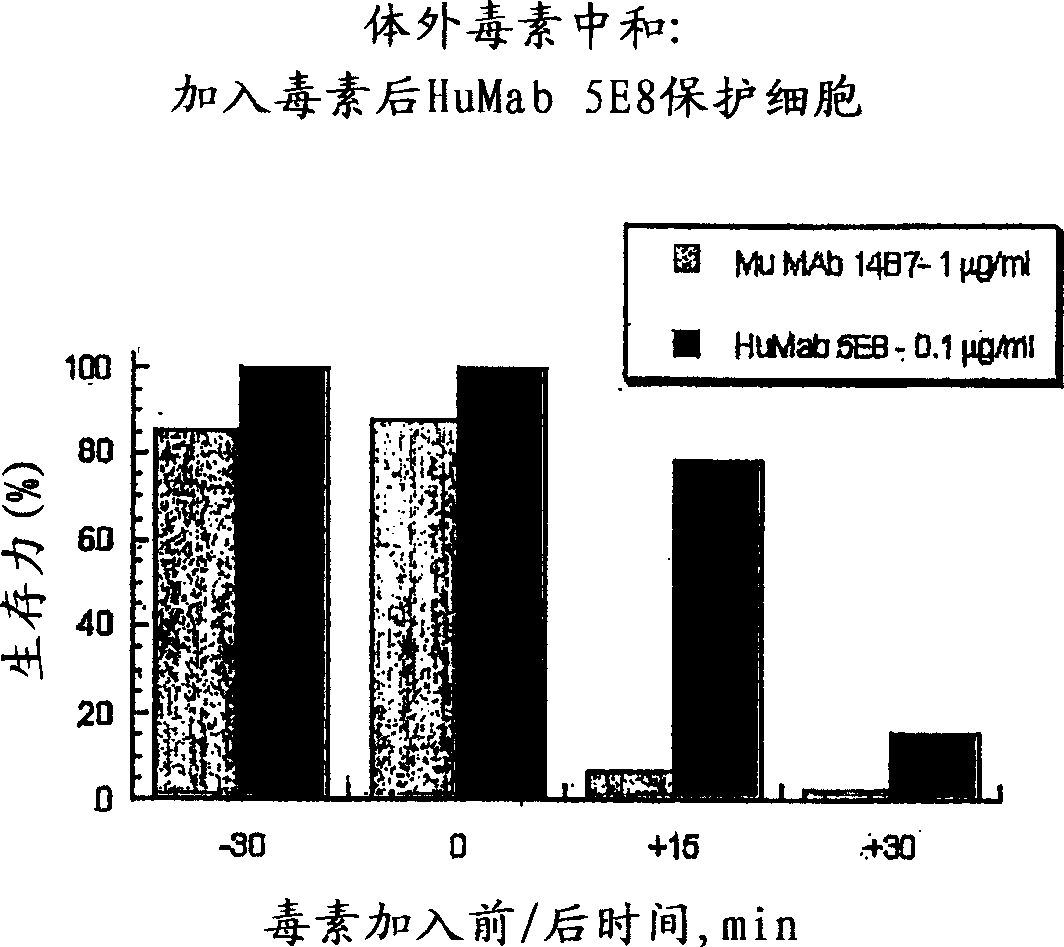Human monoclonal antibodies against bacillus anthracis protective antigen
A technology of Bacillus anthracis and human monoclonal antibodies, applied in the fields of peptides, immunoglobulins, chemical instruments and methods, etc., can solve the problems of inability to provide protection and interference with the development of expansive immune responses
- Summary
- Abstract
- Description
- Claims
- Application Information
AI Technical Summary
Problems solved by technology
Method used
Image
Examples
Embodiment 1
[0218] Example 1: Preparation of transgenic animals fully expressing human antibodies
[0219] I. Generation of transgenic (Cmu-targeted) mice
[0220] Construction of CMD targeting vector
[0221] Plasmid pICEmu contains the EcoRI / XhoI fragment of the murine Ig heavy chain locus spanning the mu gene obtained from the Balb / C genomic lambda phage library (Marcu et al. Cell 22:187, 1980). This genomic fragment was subcloned into the XhoI / EcoRI site of plasmid pICEMI9H (Marsh et al., Gene 32, 481-485, 1984). The heavy chain sequence included in pICEmu extends from downstream of the EcoRI site 3' of the mu intron-containing enhancer to an XhoI site approximately 1 kb downstream of the last transmembrane exon of the mu gene; however, most of the mu conversion repeats The region has been deleted by passaging in E. coli.
[0222] The targeting vector was constructed as follows. The 1.3 kb HindIII / SmaI fragment was excised from pICEmu and subcloned into HindIII / SmaI digested pBlue...
Embodiment 2
[0236] Example 2: Production of fully human antibodies against anthrax protective antigens
[0237] Human monoclonal antibodies against the anthrax protective antigen were raised in transgenic mice generated as described above as described below.
[0238] Production of human anti-PA monoclonal antibody
[0239] The transgenic HuMAb Mouse(R) line HC2 / KCo7, which has four different genetic modifications, was used for immunization. These transgenic mice contain human immunoglobulin gene miniloci that encode unrearranged human heavy (μ and γ) and kappa light chain immunoglobulin sequences, as well as targets for inactivation of the endogenous μ and κ chain loci. fixed mutation. Thus, the mice exhibit no expression of mouse IgM or kappa, and undergo class switching and somatic mutation to produce high affinity human IgG kappa monoclonal antibodies in response to immunization introduced human heavy and light chain transgenes.
[0240] Mice were housed in filter cages and assessed...
Embodiment 3A
[0246] Example 3A: In Vitro Neutralization of Lethal Toxin by Anti-PA Human Monoclonal Antibody
[0247] TNA experiments were performed according to Little et al., 1990, supra. Briefly, the toxin-sensitive murine macrophage cell line J774A.1 was exposed to a mixture of PA and LF (10:1 ) in the presence or absence of different concentrations of anti-PA mAb. After 3 hours of incubation, macrophage viability was determined using a viability dye (MTT). The results (Figure 10) demonstrate the activity of human anti-PA antibodies in neutralizing lethal toxin in vitro. Table 2 below shows that maintaining 50% viability of macrophages in TNA (ED 50 ) The effective dose of antibody required.
[0248] Antibody
ED 50 (μg / mL)
5D5
0.035
2H4
0.060
5E8
0.015
2D5
5
[0249] To examine direct binding to anthrax protective antigen, ELISA plates were coated with PA83 or PA63. mAb samples were added at appropr...
PUM
 Login to View More
Login to View More Abstract
Description
Claims
Application Information
 Login to View More
Login to View More - R&D
- Intellectual Property
- Life Sciences
- Materials
- Tech Scout
- Unparalleled Data Quality
- Higher Quality Content
- 60% Fewer Hallucinations
Browse by: Latest US Patents, China's latest patents, Technical Efficacy Thesaurus, Application Domain, Technology Topic, Popular Technical Reports.
© 2025 PatSnap. All rights reserved.Legal|Privacy policy|Modern Slavery Act Transparency Statement|Sitemap|About US| Contact US: help@patsnap.com



